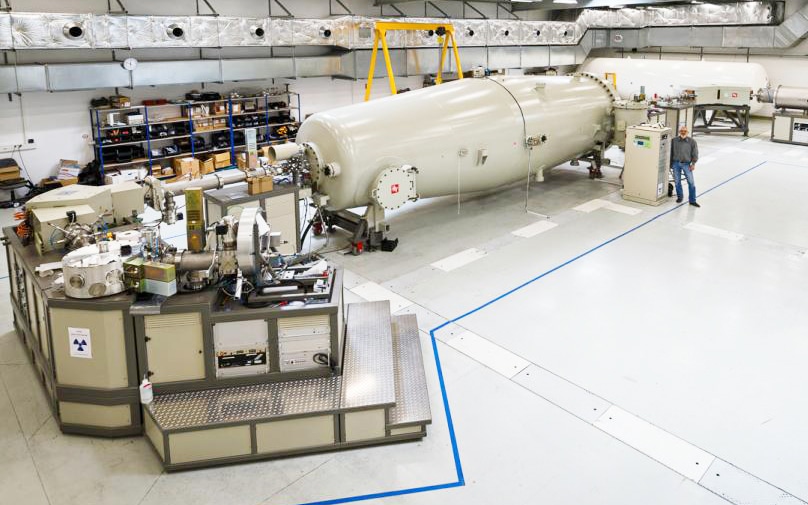AMS ASTER
The ASTER instrument is a Accelerator Mass Spectrometer (SMA) installed in 2006 at CEREGE. It is the backbone of the LN2C, ensuring the measurement of samples prepared at CEREGE or sent by partner laboratories.
Accelerator Mass Spectrometry (AMS)
Mass spectrometry is the central analytical technique of isotope geochemistry. It allows the measurement of isotope ratios various up to 10-6. In the case of cosmogenic nuclides, such as 10Be, their very low abundance involves isotope ratios (e.g. 10Be/9Be) in the order of 10-12-10-8 for atmospheric varieties and 10-14-10-12 for in situ varieties. In addition, the existence ofisobars (isotopes of different elements with the same mass number: 10B and 10Be, 36S and 36Cl or 26Mg and 26Al) whose natural abundances are much higher than the cosmogenic nuclide of interest, is a major difficulty for these mass separation techniques.
Specific methods must therefore be implemented to lowering the detection threshold by several orders of magnitude and ensure good isobar separation. Accelerator Mass Spectrometry (AMS) combines the classical approaches of mass spectrometry allowing differential deflection selection of ion beams in magnetic fields according to mass number with acceleratorsThese are used in particle physics, allowing high-energy peeling of the ion beam and separation of the isobars by differential energy loss as a function of charge number.
The following isotope ratios are routinely measured by the ASTER instrument.
. 10Be/9Be
. 26Al/27Al
. 36Cl/35Cl
Developments
Maintaining the instrument at the highest level of international activity requires constant work to development andoptimization performance. The characteristics of the instrument are thus continuously adapted to provide the highest level of quality for the measurements made.
A major current development project is the establishment of a Gas Filled Magnet (GFM), allowing a major gain in accuracy on the measurement of the 26Al/27Al, with major implications for the implementation of burial dating.










